Related Research Articles
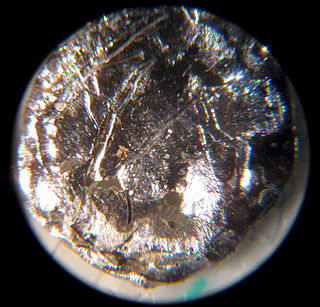
Americium is a synthetic chemical element; it has symbol Am and atomic number 95. It is radioactive and a transuranic member of the actinide series in the periodic table, located under the lanthanide element europium and was thus named after the Americas by analogy.
The actinide or actinoid series encompasses the 14 metallic chemical elements with atomic numbers from 89 to 103, actinium through Lawrencium. The actinide series derives its name from the first element in the series, actinium. The informal chemical symbol An is used in general discussions of actinide chemistry to refer to any actinide.
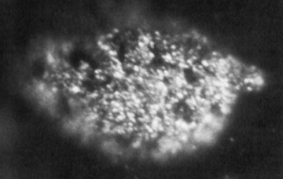
Berkelium is a synthetic chemical element; it has symbol Bk and atomic number 97. It is a member of the actinide and transuranium element series. It is named after the city of Berkeley, California, the location of the Lawrence Berkeley National Laboratory where it was discovered in December 1949. Berkelium was the fifth transuranium element discovered after neptunium, plutonium, curium and americium.
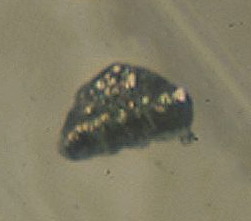
Curium is a synthetic chemical element; it has symbol Cm and atomic number 96. This transuranic actinide element was named after eminent scientists Marie and Pierre Curie, both known for their research on radioactivity. Curium was first intentionally made by the team of Glenn T. Seaborg, Ralph A. James, and Albert Ghiorso in 1944, using the cyclotron at Berkeley. They bombarded the newly discovered element plutonium with alpha particles. This was then sent to the Metallurgical Laboratory at University of Chicago where a tiny sample of curium was eventually separated and identified. The discovery was kept secret until after the end of World War II. The news was released to the public in November 1947. Most curium is produced by bombarding uranium or plutonium with neutrons in nuclear reactors – one tonne of spent nuclear fuel contains ~20 grams of curium.

Californium is a synthetic chemical element; it has symbol Cf and atomic number 98. The element was first synthesized in 1950 at Lawrence Berkeley National Laboratory, by bombarding curium with alpha particles. It is an actinide element, the sixth transuranium element to be synthesized, and has the second-highest atomic mass of all elements that have been produced in amounts large enough to see with the naked eye. The element was named after the university and the U.S. state of California.

Einsteinium is a synthetic chemical element; it has symbol Es and atomic number 99. Einsteinium is a member of the actinide series and it is the seventh transuranium element. It was named in honor of Albert Einstein.

Fermium is a synthetic chemical element; it has symbol Fm and atomic number 100. It is an actinide and the heaviest element that can be formed by neutron bombardment of lighter elements, and hence the last element that can be prepared in macroscopic quantities, although pure fermium metal has not yet been prepared. A total of 20 isotopes are known, with 257Fm being the longest-lived with a half-life of 100.5 days.
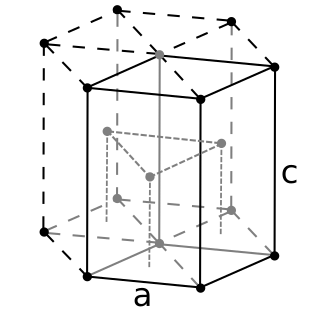
Lawrencium is a synthetic chemical element; it has symbol Lr and atomic number 103. It is named in honor of Ernest Lawrence, inventor of the cyclotron, a device that was used to discover many artificial radioactive elements. A radioactive metal, lawrencium is the eleventh transuranic element and the last member of the actinide series. Like all elements with atomic number over 100, lawrencium can only be produced in particle accelerators by bombarding lighter elements with charged particles. Fourteen isotopes of lawrencium are currently known; the most stable is 266Lr with half-life 11 hours, but the shorter-lived 260Lr is most commonly used in chemistry because it can be produced on a larger scale.

Mendelevium is a synthetic chemical element; it has symbol Md and atomic number 101. A metallic radioactive transuranium element in the actinide series, it is the first element by atomic number that currently cannot be produced in macroscopic quantities by neutron bombardment of lighter elements. It is the third-to-last actinide and the ninth transuranic element. It can only be produced in particle accelerators by bombarding lighter elements with charged particles. Seventeen isotopes are known; the most stable is 258Md with half-life 51 days; however, the shorter-lived 256Md is most commonly used in chemistry because it can be produced on a larger scale.

Nobelium is a synthetic chemical element; it has symbol No and atomic number 102. It is named in honor of Alfred Nobel, the inventor of dynamite and benefactor of science. A radioactive metal, it is the tenth transuranic element and is the penultimate member of the actinide series. Like all elements with atomic number over 100, nobelium can only be produced in particle accelerators by bombarding lighter elements with charged particles. A total of twelve nobelium isotopes are known to exist; the most stable is 259No with a half-life of 58 minutes, but the shorter-lived 255No is most commonly used in chemistry because it can be produced on a larger scale.

Thorium is a chemical element; it has symbol Th and atomic number 90. Thorium is a weakly radioactive light silver metal which tarnishes olive gray when it is exposed to air, forming thorium dioxide; it is moderately soft and malleable and has a high melting point. Thorium is an electropositive actinide whose chemistry is dominated by the +4 oxidation state; it is quite reactive and can ignite in air when finely divided.
A period 7 element is one of the chemical elements in the seventh row of the periodic table of the chemical elements. The periodic table is laid out in rows to illustrate recurring (periodic) trends in the chemical behavior of the elements as their atomic number increases: a new row is begun when chemical behavior begins to repeat, meaning that elements with similar behavior fall into the same vertical columns. The seventh period contains 32 elements, tied for the most with period 6, beginning with francium and ending with oganesson, the heaviest element currently discovered. As a rule, period 7 elements fill their 7s shells first, then their 5f, 6d, and 7p shells in that order, but there are exceptions, such as uranium.
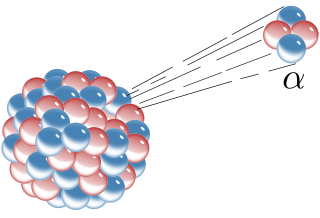
Nuclear chemistry is the sub-field of chemistry dealing with radioactivity, nuclear processes, and transformations in the nuclei of atoms, such as nuclear transmutation and nuclear properties.
In nuclear chemistry, the actinide concept proposed that the actinides form a second inner transition series homologous to the lanthanides. Its origins stem from observation of lanthanide-like properties in transuranic elements in contrast to the distinct complex chemistry of previously known actinides. Glenn Theodore Seaborg, one of the researchers who synthesized transuranic elements, proposed the actinide concept in 1944 as an explanation for observed deviations and a hypothesis to guide future experiments. It was accepted shortly thereafter, resulting in the placement of a new actinide series comprising elements 89 (actinium) to 103 (lawrencium) below the lanthanides in Dmitri Mendeleev's periodic table of the elements.
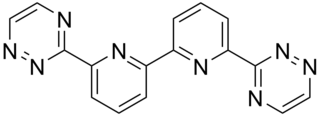
The bis-triazinyl bipyridines (BTBPs) are a class of chemical compounds which are tetradentate ligands similar in shape to quaterpyridine. The BTBPs are made by the reaction of hydrazine and a 1,2-diketone with 6,6'-dicyano-2,2'-bipyridine. The dicyanobipy can be made by reacting 2,2'-bipy with hydrogen peroxide in acetic acid, to form 2,2'-bipyridine-N,N-dioxide. The 2,2'-bipyridine-N,N-dioxide is then converted into the dicyano compound by treatment with potassium cyanide and benzoyl chloride in a mixture of water and THF.
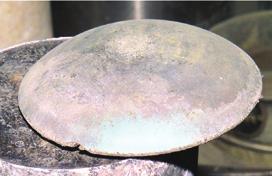
Actinide chemistry is one of the main branches of nuclear chemistry that investigates the processes and molecular systems of the actinides. The actinides derive their name from the group 3 element actinium. The informal chemical symbol An is used in general discussions of actinide chemistry to refer to any actinide. All but one of the actinides are f-block elements, corresponding to the filling of the 5f electron shell; lawrencium, a d-block element, is also generally considered an actinide. In comparison with the lanthanides, also mostly f-block elements, the actinides show much more variable valence. The actinide series encompasses the 15 metallic chemical elements with atomic numbers from 89 to 103, actinium through lawrencium.

Many compounds of thorium are known: this is because thorium and uranium are the most stable and accessible actinides and are the only actinides that can be studied safely and legally in bulk in a normal laboratory. As such, they have the best-known chemistry of the actinides, along with that of plutonium, as the self-heating and radiation from them is not enough to cause radiolysis of chemical bonds as it is for the other actinides. While the later actinides from americium onwards are predominantly trivalent and behave more similarly to the corresponding lanthanides, as one would expect from periodic trends, the early actinides up to plutonium have relativistically destabilised and hence delocalised 5f and 6d electrons that participate in chemistry in a similar way to the early transition metals of group 3 through 8: thus, all their valence electrons can participate in chemical reactions, although this is not common for neptunium and plutonium.
The advanced reprocessing of spent nuclear fuel is a potential key to achieve a sustainable nuclear fuel cycle and to tackle the heavy burden of nuclear waste management. In particular, the development of such advanced reprocessing systems may save natural resources, reduce waste inventory and enhance the public acceptance of nuclear energy. This strategy relies on the recycling of major actinides and the transmutation of minor actinides in appropriate reactors. In order to fulfill this objective, selective extracting agents need to be designed and developed by investigating their complexation mechanism.
Curium compounds are compounds containing the element curium (Cm). Curium usually forms compounds in the +3 oxidation state, although compounds with curium in the +4, +5 and +6 oxidation states are also known.
Einsteinium compounds are compounds that contain the element einsteinium (Es). These compounds largely have einsteinium in the +3 oxidation state, or in some cases in the +2 and +4 oxidation states. Although einsteinium is relatively stable, with half-lives ranging from 20 days upwards, these compounds have not been studied in great detail.
References
- ↑ "Who's who".
- ↑ "Académie des sciences".
- ↑ "Académie des Technologies".
- ↑ "CNE".
- ↑ "Protactinium encyclopedie universalis".
- ↑ S. Hubert, M. Hussonnois, L Brillard, G. Goby et R. Guillaumont, « Détermination simultanée de constantes de formation de complexes citrique de l'américium, du curium, du californium, de l'einsteinium et du fermium », Journal of Inorganic and Nuclear Chemistry, 1974, 36 (10), p. 2361-2366
- ↑ B. Désiré, M. Hussonnois, R. Guillaumont, « Détermination de la première constante d’hydrolyse de l’américium, du curium, du berkélium et du californium », CR Acad. Sci. Paris, 1969, 269, p. 448-462
- ↑ M. Hussonnois, S. Hubert, L. Aubin, R. Guillaumont, G. Boussières, « Determination de la première constante d’hydrolyse du fermium », Radiochemical and Radioanalytical Letters, 1972, 10 (4), p. 231-23
- ↑ M. Hussonnois, S. Hubert, L Brillard, R. Guillaumont, « Production et hydrolyse de l'einsteinium », Radiochem. Radioanal. Letters, 1973, 15 (1), p. 47-56
- ↑ A. Peneloux, R. Guillaumont, « Solutions de dilution extrême et loi d’action de masse », CR Acad. Sci. Paris, 1990, 310 (12), p. 1607-1613
- ↑ J.P. Adloff et R. Guillaumont, Fundamental of Radiochemistry, CRC Press, 1993
- ↑ F David, K Samhoun, R. Guillaumont, N. Edelstein, «Thermodynamic properties of 5f elements », Journal of Inorganic and Nuclear Chemistry, 1978, 40 (1), p. 69-74
- ↑ R. Guillaumont (Chairman), T. Fanghänel, J. Fuger, I. Grenthe, V. Neck, D. Palmer, M. Rand,, Update on the Chemical Thermodynamics of Uranium, Neptunium, Plutonium, Americium and Technetium, AEN-OCDE, North- Holland,, Elsevier, 2003, 700 p.
- ↑ G. Ionova, J.C. Krupa, I. Gerard, R. Guillaumont, « Systematics in electron-transfer energies for lanthanides and actinides », New Journal of Chemistry, 1995, 19 (5-6), p. 677-689
- ↑ J.C. Krupa, M. Hussonnois, M. Genet, R. Guillaumont, « Optical spectra of Pa4+ diluted in ThCl4 single crystals », The Journal of Chemical Physics, 1982, 77 (1), p. 154-158
- ↑ B. Fourest, N. Hakem, R. Guillaumont, « Characterization of colloids by measurement of their mobilities », Radiochimica Acta, 1994, 66 (s1), p. 173-180
- ↑ G. Ionova, S. Ionov, C. Rabbe, C Hill, C. Madic, R. Guillaumont, J.C. Krupa, « Mechanism of trivalent actinide/lanthanide separation using bis (2, 4, 4-trimethylpentyl) dithiophosphinic acid (Cyanex 301) and neutral O-bearing co-extractant synergistic », Solvent Extraction and Ion Exchange, 2001, 19 (3), p. 391-414
- ↑ "Actualités chimiques 1".
- ↑ "Actualité chimique 2".
- ↑ "Gestion des déchets radioactifs. R. Guillaumont. Techniques de l'Ingénieur, (2001) BN 3 660 et Doc BN 3 660 (2003) BN 3 661 et Doc BN 3 662".
- ↑ "BnF".